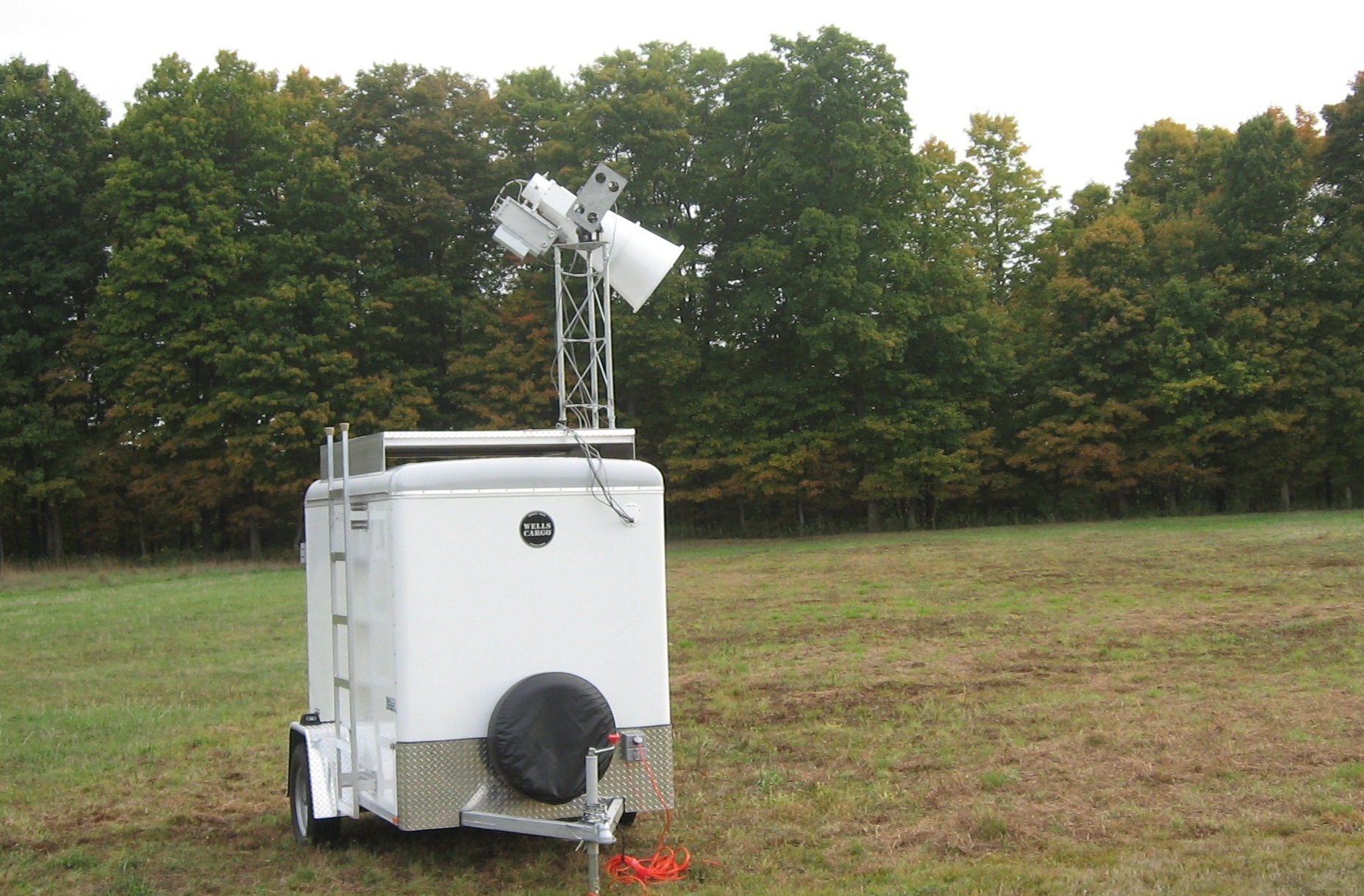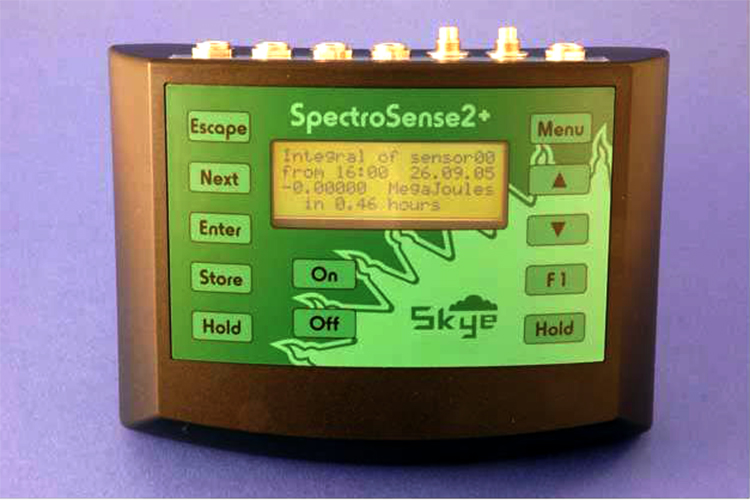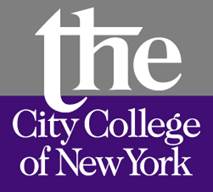|
L-band Radiometer:
At site brightness temperature is measured at the 1.4 GHz frequency (L-band) in the vertical and horizontal polarizations. The radiometer was mounted on the top of a trailer and towed with a truck parallel to the observed pixels. A potter horn antenna was used to achieve a 30° half-power beam width antenna pattern. The antenna was positioned at around 4 m above the ground. The instrument has a typical 20-min warm-up time and 0.5 K resolution for a 200-ms integration time. The instrument was inspected right before the experiment for calibration purposes. The analysis of prior micro- wave temperature measurements did not reveal any radio frequency interference contamination in the area. Frequent stops were made to stabilize the measured brightness temperature after moving the trailer from one pixel to the next. Brightness temperatures were measured at a 40° observing angle, which is similar to the angle of the future SMAP mission. The radiometer’s potter horn antenna was designed with an integrated mounting plate.
The elevation-over- azimuth rotator is a fully weatherized pan-tilt rotator designed for harsh environments and a large payload. It is powered and steered via a remote-control head located inside the trailer. The rotator provides 360° horizontal and 180° elevation (zenith to nadir) tilt capability. The trailer was carefully moved to maintain the same incidence angle and positioned to ensure that the entire observed pixel was included within the footprint of the radiometer. The same path and order of observation were followed during each individual pass.
|
 |
Soil Moisture Probes:
The network is equipped with Hydra Probe sensors (Stevens Water) to measure soil moisture and soil temperature at the installed depths. The six soil moisture measuring stations has have two observation of three profiles installed, with sensors at the 2.5, 5, and 10-cm depths. All sensors are installed horizontally with an approximate sensing range of 4 cm, so the 2.5-cm installation estimates soil moisture in the 0.5- to 4.5-cm depth. Sensors at these different depths are commonly used to validate satellite remote sensing products because they provide useful long-term observations of soil moisture at depths close to the penetration depth of the microwave signal in the L-band. An analysis of observations from the permanent sites has shown that soil moisture at the study site typically ranges from 0.05 to 0.35 m3/m3, which is common for this temperate climate. |
 |
SpectroSense2 Meter/Logger for NDVI
SpectroSense2+ is an 8-channel logger & meter Designed for single channel, 2-channel, or 4-channel sensor types Can also be used with light sensors from most other manufacturers SpectroSense2+displays and logs from 8 sensors or channels Displays sensor ratios for NDVI calculations Hold & store functions Ideal for ground truth measurements.
|
 |
|
|
  
|
|